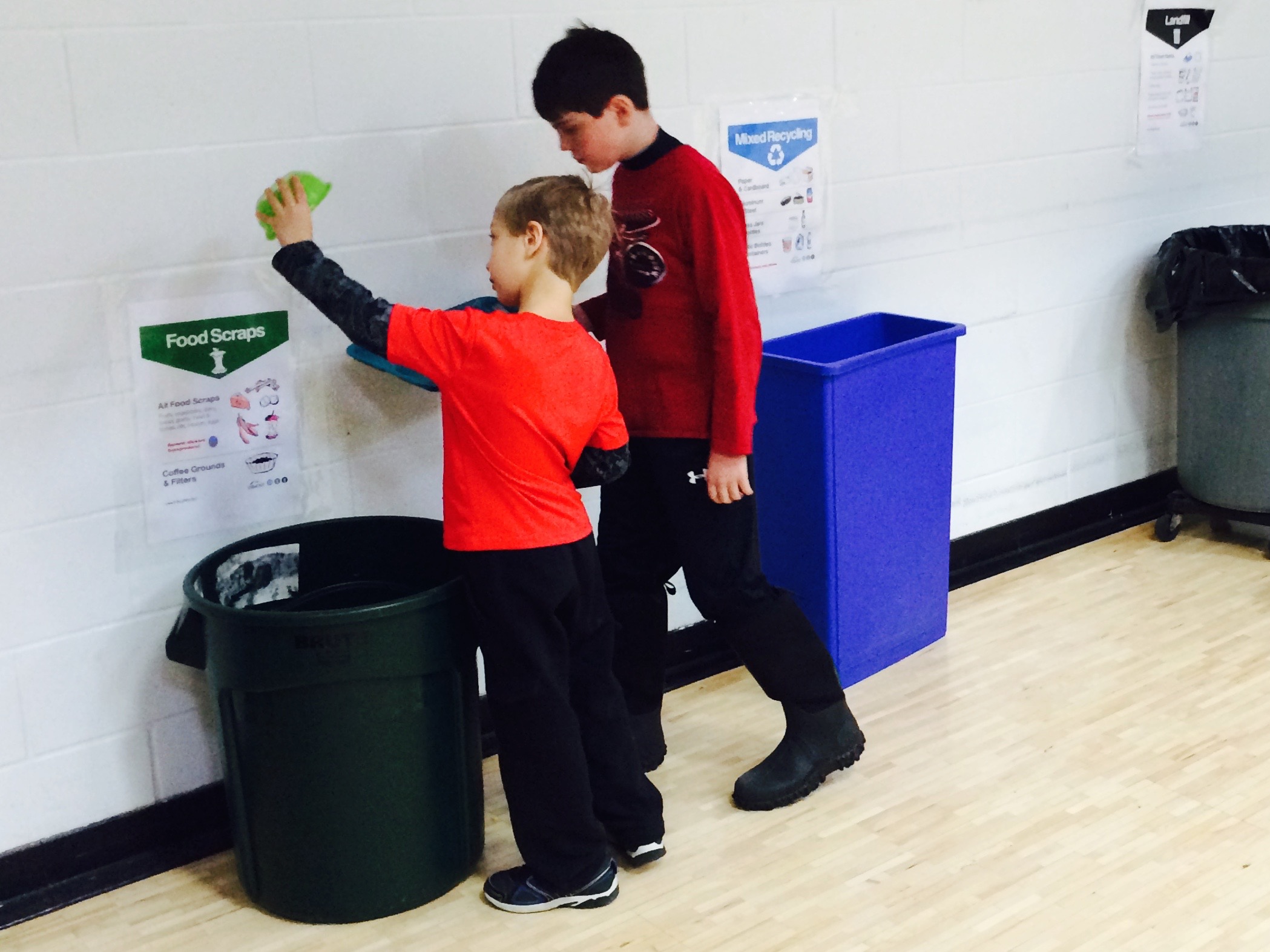Food Scrap Recycling Feeds Environment in Fletcher

By Chris Dodge
Students at the Fletcher Elementary School are learning how to reduce waste and feed the environment, one food scrap at a time.
“We have focused on schools and institutions first because these places have large numbers of people that consume food in one place and produce a high volume of waste,” said Aaron Shepard, Outreach, Recycling and Composting Coordinator for the Northwest Solid Waste District. “We need to capture the large volumes first in order to establish infrastructure like [pick-up] routes and composting facilities.”
After returning from their holiday break, all students at the school learned why recycling their food scraps is important to the environment.
“It keeps food out of the landfill and when you compost food scraps you can use the compost to grow beautiful things,” fourth grader Camrynn Slingerland said. “And those beautiful things like trees and plants help to clean the air. Everybody wins.”
Students are recycling scraps from fruits and vegetables, dairy, bread, grains, meat and bones, oils, sauces, and eggs. In addition to food scrap recycling in the cafeteria, some classes have classroom recycling containers for students’ snack scraps.
“Focusing on [schools] can affect a lot of positive environmental change quickly. Also, it’s easier to change children’s behavior than adults’,” Shepard said. “Though we might not get adults into compliance right away, kids grow up with this as their norm and the kids can take this new behavior home and help us work on their parents. Working with schools is a long-term strategy.”
Food scraps from the school are hauled to Hudak Farm Stand and Greenhouse in Swanton. The Northwest Solid Waste District currently transports about 20 tons of food waste there each month. The food scraps are mixed with leaves, chipped brush and horse manure to create compost. The finished product is used on the Hudak fields or sold.
According to the U.S. Composting Council, compost provides nutrients for crops, suppresses plant diseases, binds and removes contaminants from soil, controls erosion, modifies and stabilizes the pH and structure of soil and provides a natural alternative to plastic mulching products.
The Fletcher School currently recycles slightly more than 12 gallons of food scraps each week. The environmental savings, according to Shepard, is equivalent to the greenhouse gasses produced by two and a half gallons of gasoline in an automobile. A 2014 study of food waste in Vermont showed that approximately 60,000 tons of food waste was going into Vermont landfills annually.
“Recycling our food scraps help make our state and country healthier,” fourth grader Xavier Gillilan said. “We send them things that we would normally throw away and they make something good for the earth. It’s like magic.”
Food scrap recycling is one of five strategies featured in the Environmental Protection Agency’s Food Recovery Hierarchy, along with reducing surplus food generated, donating extra food to those in need, diverting food scraps to animal feed, using food scraps to produce energy and, as a last resort, disposing of scraps in a landfill.
In 2015, food scrap generators of more than 52 tons a year were required to divert materials to a certified facility within 20 miles. Last year, the bar was lowered, requiring producers of 26 tons or more per year to divert materials. That benchmark will decrease once again this July, to 18 tons, before food waste is banned from all Vermont landfills completely on July 1, 2020.
“It feels good to be doing something positive for the earth,” fourth grader Chesney Owen said. “We would normally just throw our scraps into the garbage and they would go to the landfill. Now, instead of taking up space there, they are going to a cause that is good for all of us and our health.”




